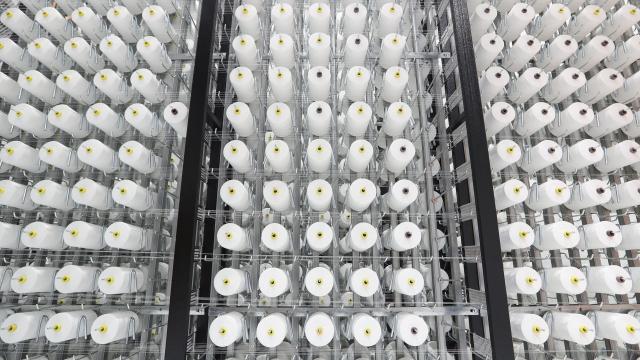Take a look into the geological record, and you might just find… plastic?
A new study based on sediment collected off the coast of Santa Barbara, California found that plastics have been building dramatically in the sediment record since 1945.
Published in Science Advances Wednesday, the study looks at a single sediment core that dates back to 1834. However, plastics didn’t really enter the environment until after World War II in 1945 because that’s when its production really ramped up. And that’s all clear in the sediment core, which the Scripps Institution of Oceanography Cal-Echoes research cruise extracted back in 2010.
Interestingly enough, the increase in plastics correlates with worldwide plastic production and the population growth along the Southern California coast that feeds the watershed where the team collected this sample.
So what does this all mean? Plastics are taking over. And this “plastic footprint,” as study author Jennifer Brandon, a biological oceanographer at the Scripps Institution of Oceanography put it, is so stark that the authors suggest it could serve as a geological proxy in the sedimentary record. Scientists have dubbed the current period we’re living in the Great Acceleration to mark our exploding industrial activity and its impact on the planet.
Typically, geologists rely on radioisotopes to flag the beginning and ends of eras, but the team behind this study thinks plastics can be the marker for when this new type of geological began.
What’s more, the ocean sediment tells a clear story of the world’s growing reliance on plastic. Between 1945 and 2009, the rate of plastic deposition doubled every 15 years on average. And the plastics found in the core aren’t just the fragments people typically think of when they hear the word microplastics. Most of the plastics — 67.5 per cent — found in the post-1945 core are fibres. Yes, you read right: fibres from clothes. And oddly enough, most of the fibres they found were white.
Reducing the use of plastic straws and bags is important, but a growing body of research shows our clothing choices play a large role in harming the marine environment.
That’s a tougher problem to solve, Brandon said, but it’s not impossible. Perhaps governments can ban certain fabrics or incentive corporations to use non-synthetic fibres. Otherwise, it’s all on the consumer, and shopping is hard enough when you’re not thinking about the oceans.
“I think all the bans on styrofoam and straws are low-hanging fruit, but I can tell you to not use straws,” Brandon told Gizmodo. “I can’t tell you to not wear clothes.”
While this study is telling, a single core isn’t necessarily indicative of what cores elsewhere in the ocean will look like. More cores from different locations would help illustrate the global impact plastics are having on our oceans. Still, that’s tough because most oceans are full of life and motion.
In comparison, the Santa Barbara Basin becomes devoid of oxygen as you inch away from the surface so there aren’t living things there, and Brandon said it also experiences little circulation. That makes it the perfect location to collect a sediment core to analyse for plastic in some ways. Nothing’s mixing up the plastics, and they just fall where they land.
There’s no doubt about it, though: Plastics are taking over the world. From the tops of mountains to the table salt in your kitchen, they’re everywhere.
“I hope this is not our greatest legacy,” Brandon said.
